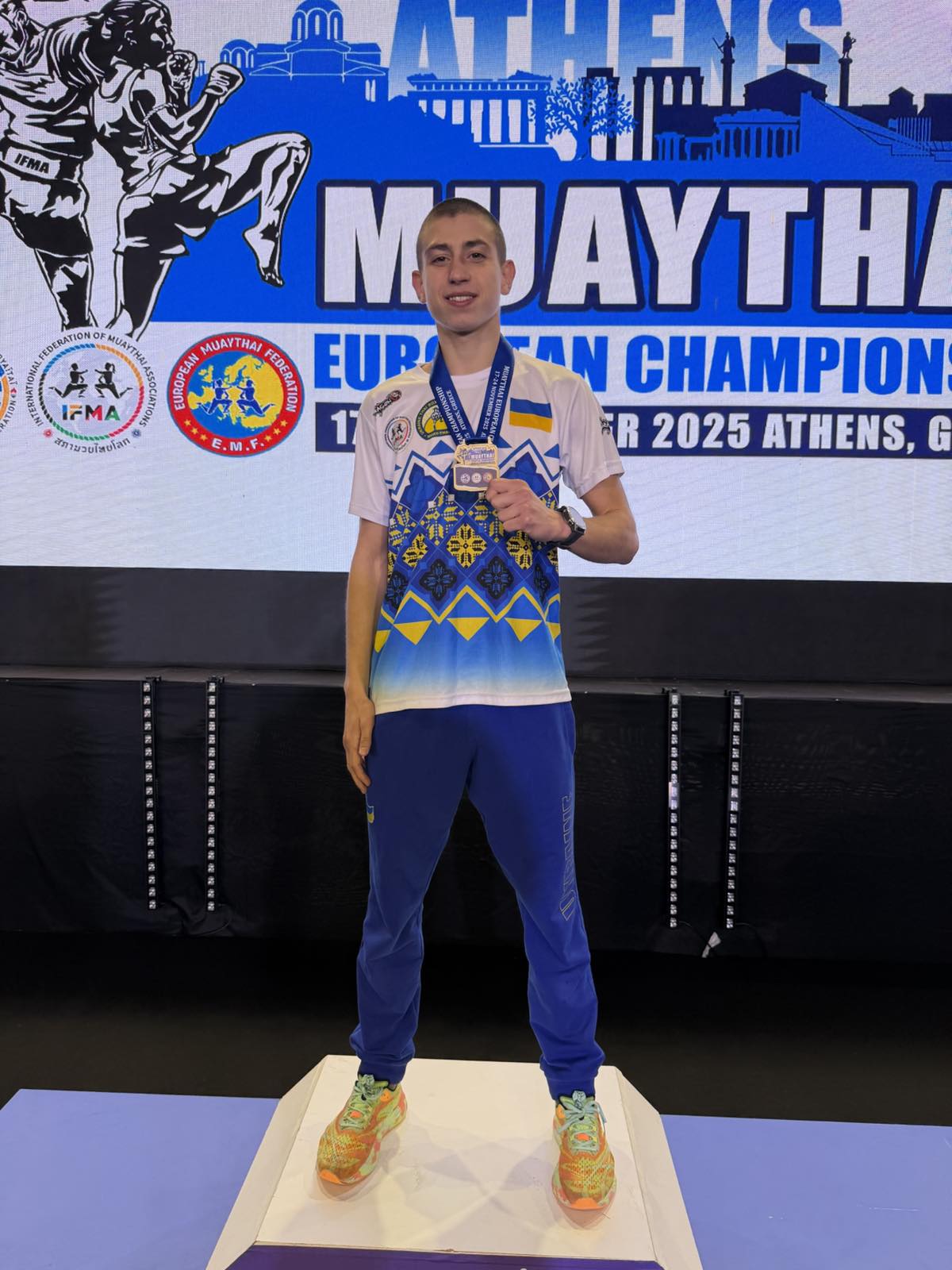On August 28, 2025, the Centre for Contemporary Art at Poltava Polytechnic became a hub for profound psychological work and creative self-discovery. On this day, a highly relevant art therapeutic event titled “Landscape Transformation” took place, forming an essential part of the Erasmus+ KA220-ADU “TRUST”.
The art therapeutic session “Landscape Transformation” was based on a powerful psychological metaphor where the landscape served as a mirror of a person's inner world. For those who have experienced trauma, this internal “landscape” is often distorted: filled with sharp angles of fear, deep abysses of anxiety, and visible destruction. This art therapeutic event aimed to allow participants first to visualise this internal “dangerous” state, bring it onto the canvas, and then actively transform it. Adding elements of safety and protection to the drawing became not just an artistic act but a symbolic reflection of the internal process of trauma processing, its integration, and the gradual restoration of psychological integrity. This allowed internal chaos to be translated into an external form and then consciously transformed into something more structured, safe, and hopeful.
At the beginning of the session, participants received sheets of paper and were invited to tables where a variety of graphic materials awaited them, including pencils, markers, and paints. This wide selection of tools was not accidental; it gave participants the freedom to choose the means of expression that best suited their deep emotions, allowing them to reflect their inner state authentically.
Olena Ostrohliad, Senior Lecturer at the Department of Fine Arts, and Maryna Teslenko, Associate Professor at the Department of Psychology and Pedagogy of Poltava Polytechnic, moderated the event.
The session began with a warm welcome, creating an atmosphere of trust and safety. The activity was divided into two key, yet complementary, phases. The first phase was dedicated to reflecting a dangerous state. Curators Olena Ostrohliad and Maryna Teslenko led a short introductory meditation, inviting participants to close their eyes, breathe deeply, and recall a time when they felt fear or anxiety. They then asked participants to imagine what this state might look like as a landscape. After this visualisation, participants chose their materials and began drawing. In this phase, the atmosphere in the room was one of deep concentration, sometimes transitioning into a silent dialogue with one's inner experiences. The landscapes that appeared on the sheets were diverse, but all reflected deep pain and traumatic experience: there were images of ruined houses under a gloomy sky, testifying to the loss of home; burning forests symbolising the destruction of nature and inner peace; stormy seas with broken ships reflecting feelings of helplessness and loss of direction. Some chose elemental images – a strong storm, a volcano, an earthquake – as a metaphor for uncontrollable events. For others, fear was associated with a specific time of day – a night shrouded in eerie shadows, or twilight evoking a sense of uncertainty. Colours were predominantly dark and unsettling: black, grey, crimson red. This stage was emotionally intense but extremely important for releasing suppressed emotions that often do not find an outlet in everyday life.
After a short break and an opportunity for brief discussion, the facilitators invited participants to consider how they could transform their landscape and introduce elements of hope and safety into it. This moment was a turning point. Participants began actively adding new elements: a radiant sun appeared over the ruins, a ship of hope sailed through the turbulent sea after the storm, and new, mighty trees grew in place of destruction, symbolising life and rebirth. Colours became lighter, lines softer, reflecting a change in the internal state. Many supplemented their works with symbols of protection: shields guarding against danger, angel wings, hugs protecting a home – all powerful metaphors for inner resilience and external support. Participants shared their impressions of the transformation, discussing the emotions they felt at each stage and what the added elements meant to them.
After completing their work, everyone gathered for a discussion where each person could show their “before” and “after” landscapes. This stage was crucial for the social sharing of experience and receiving support. Participants shared their impressions of the transformation, discussing the emotions they felt at each stage and what the added elements meant to them. Many noted how amazing it was to see their own hand change the landscape from terrifying and dangerous to safe and hopeful.
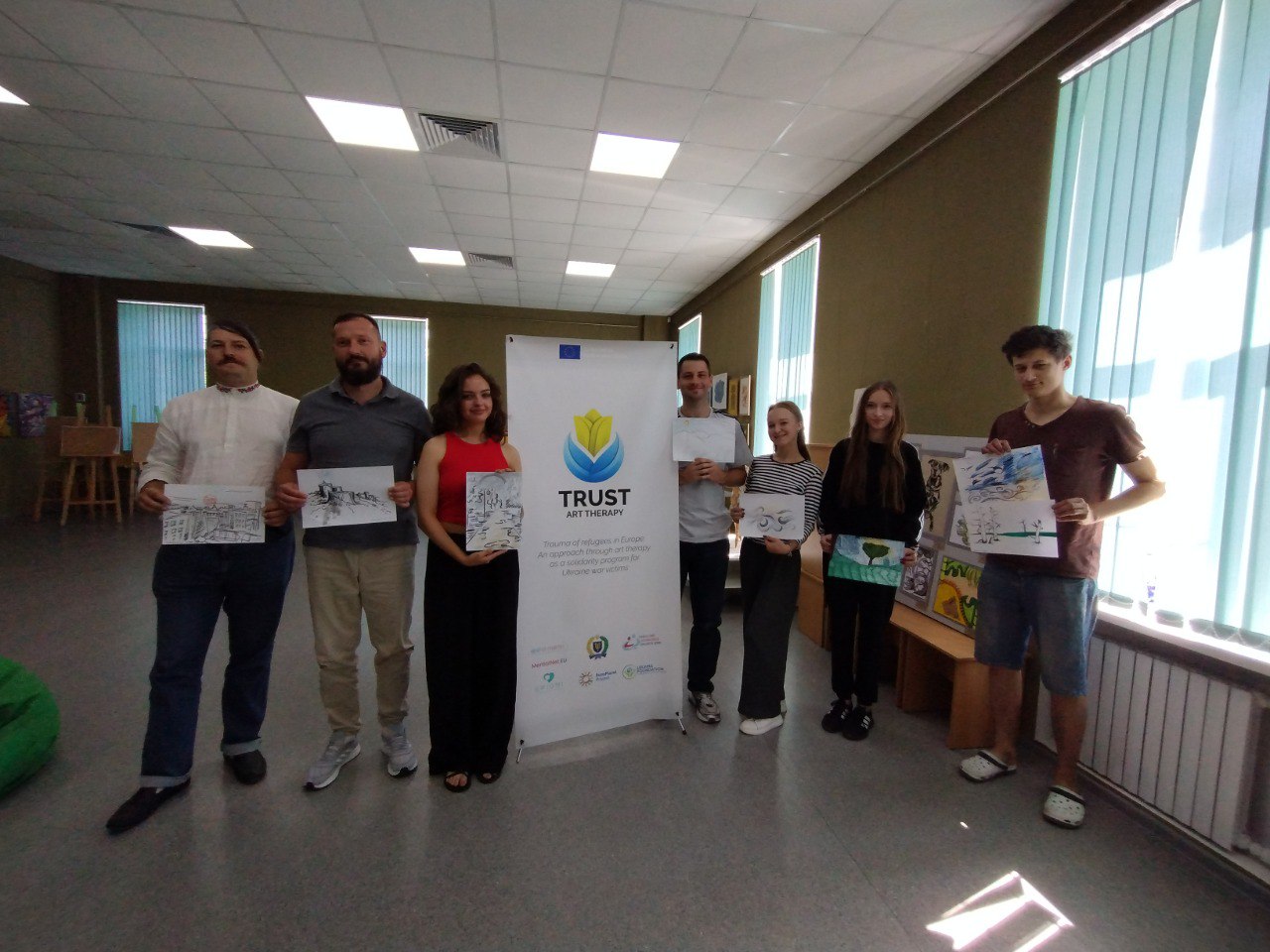
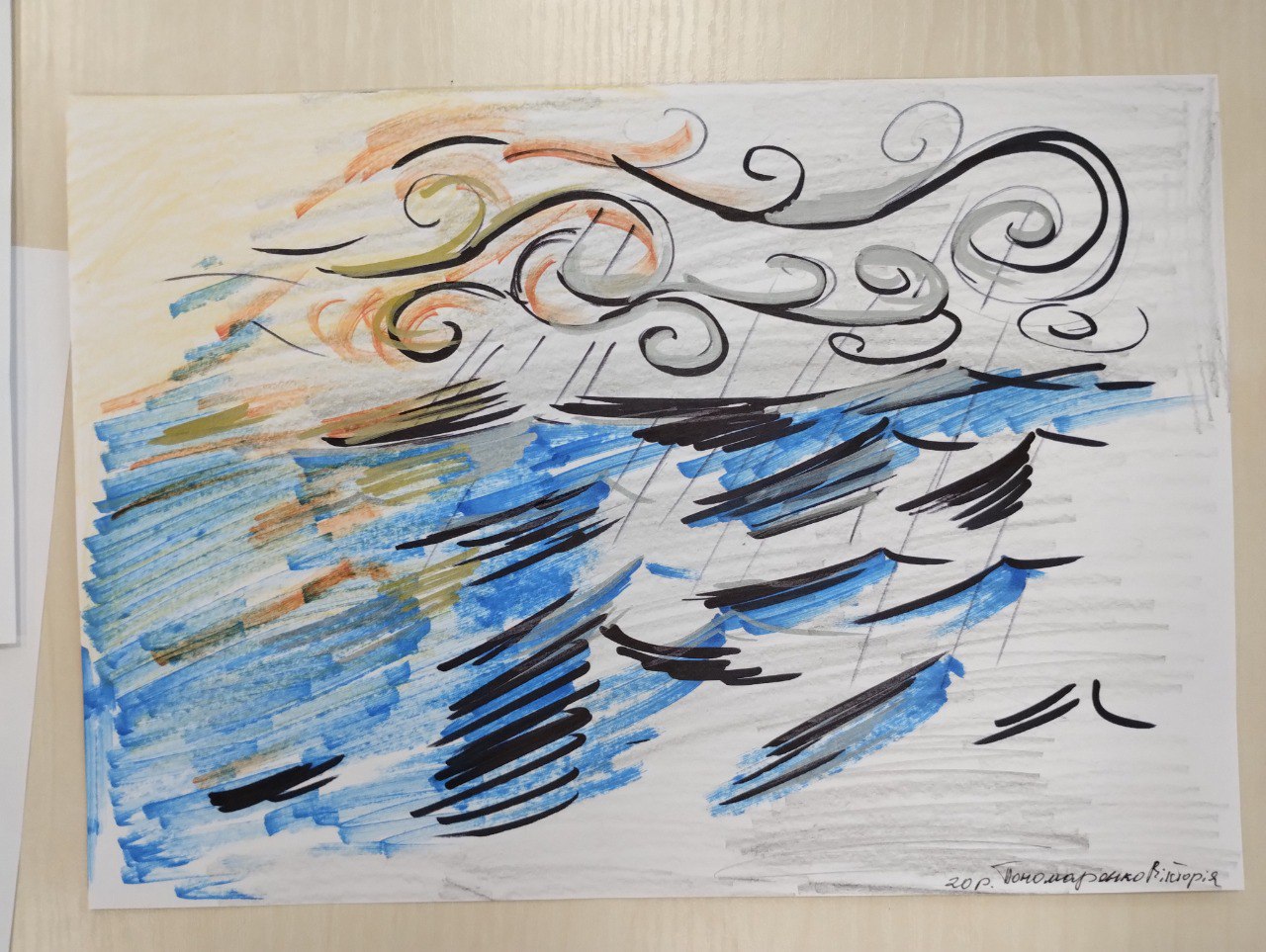
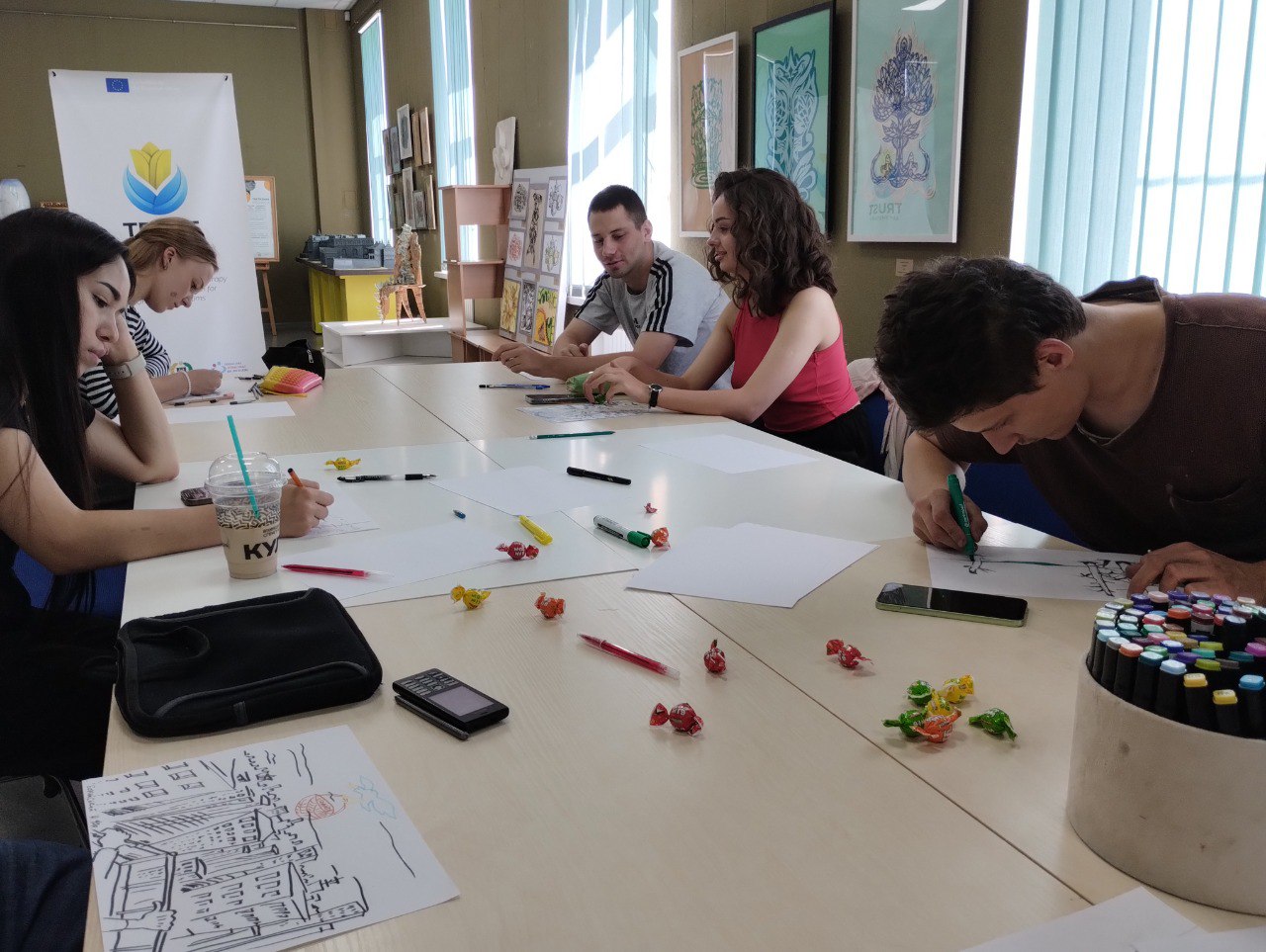
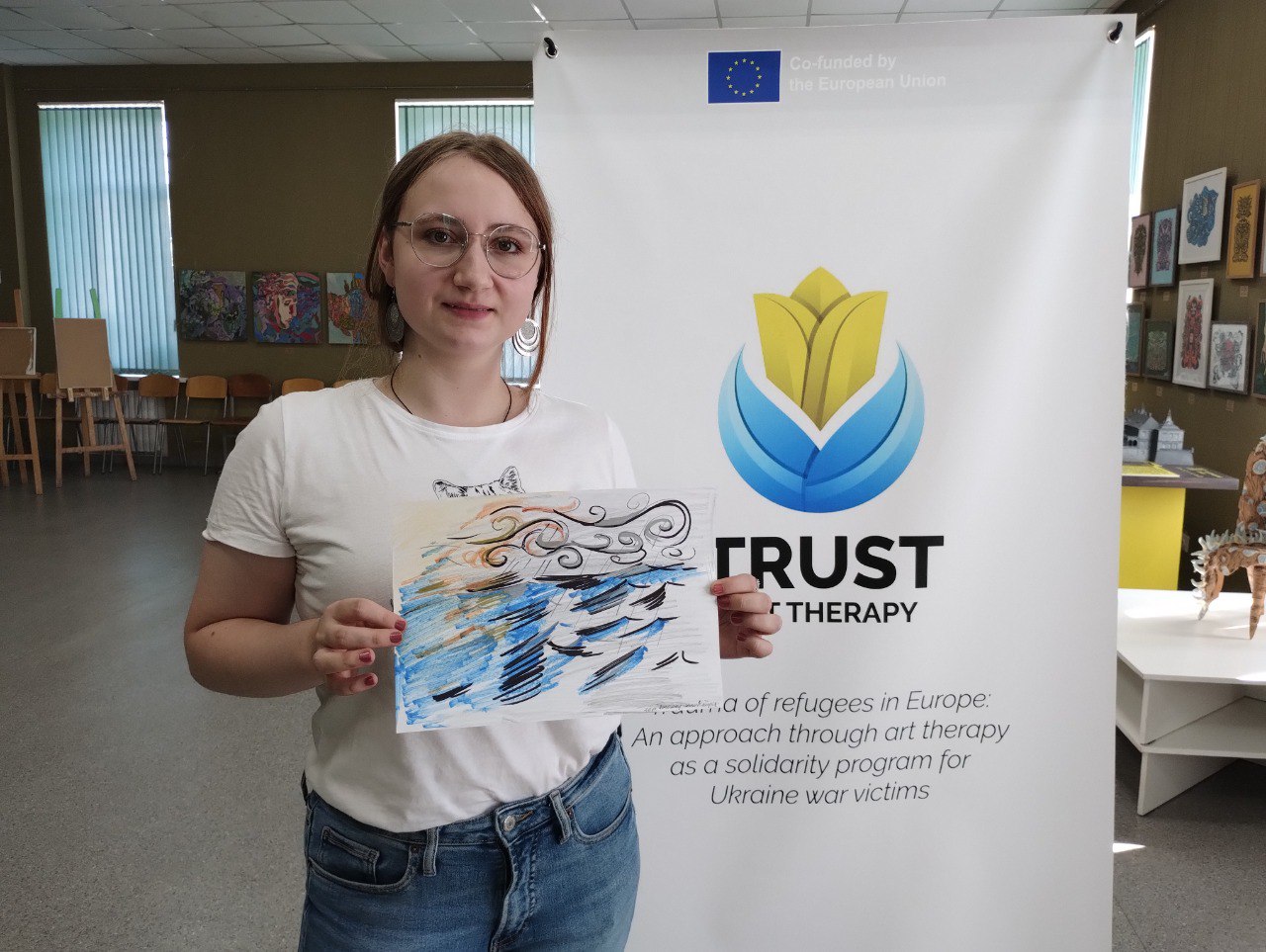
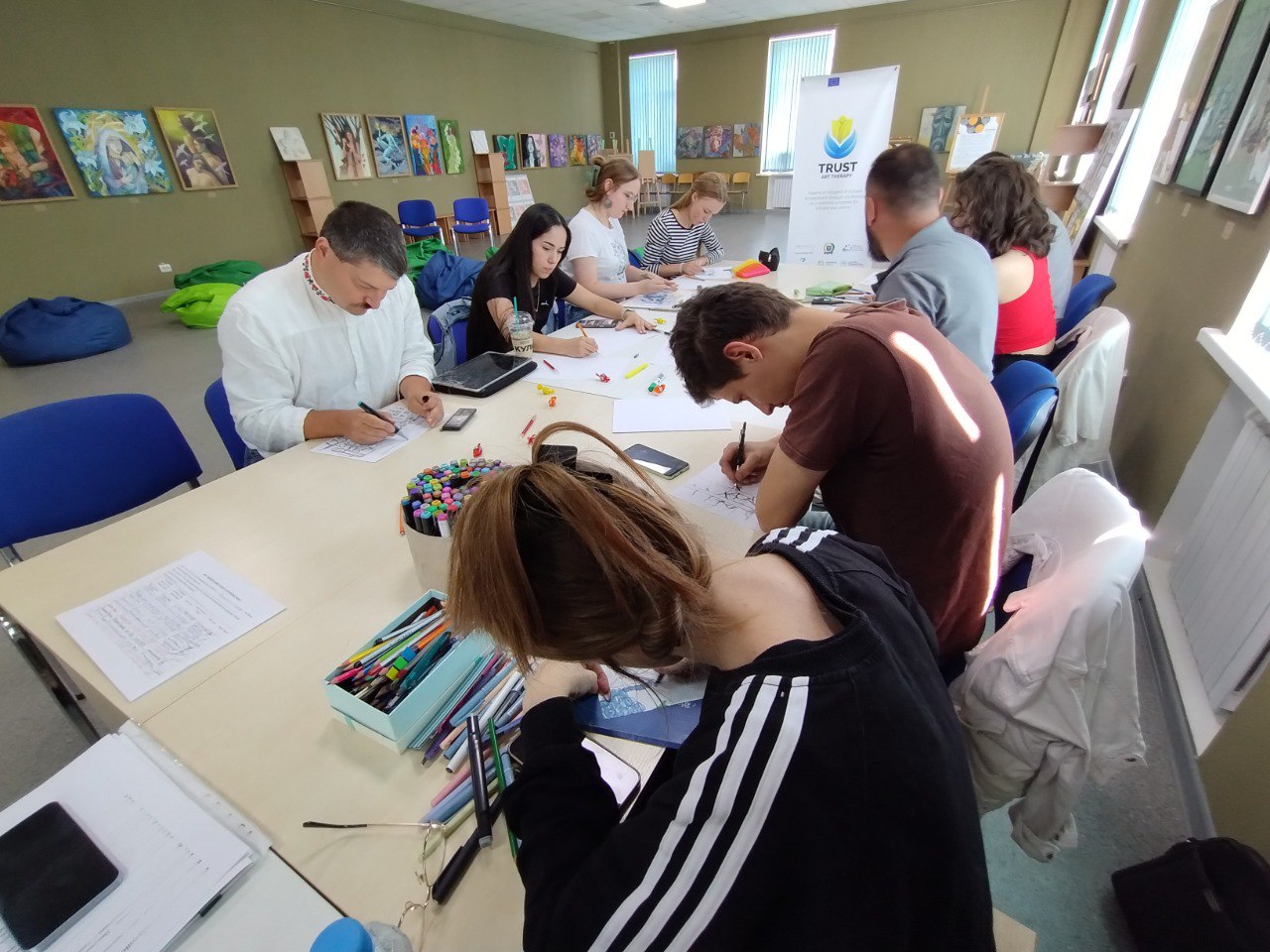
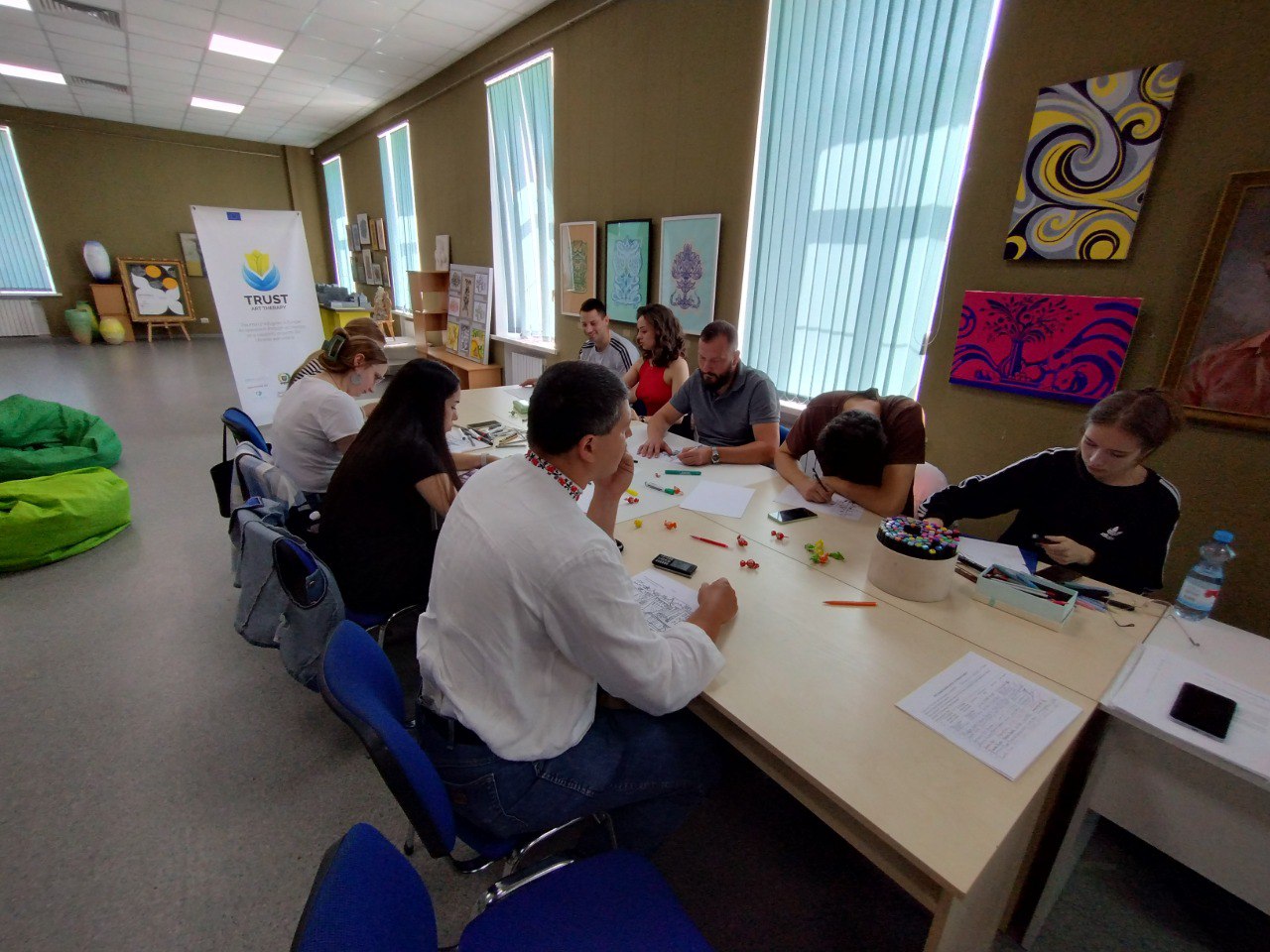
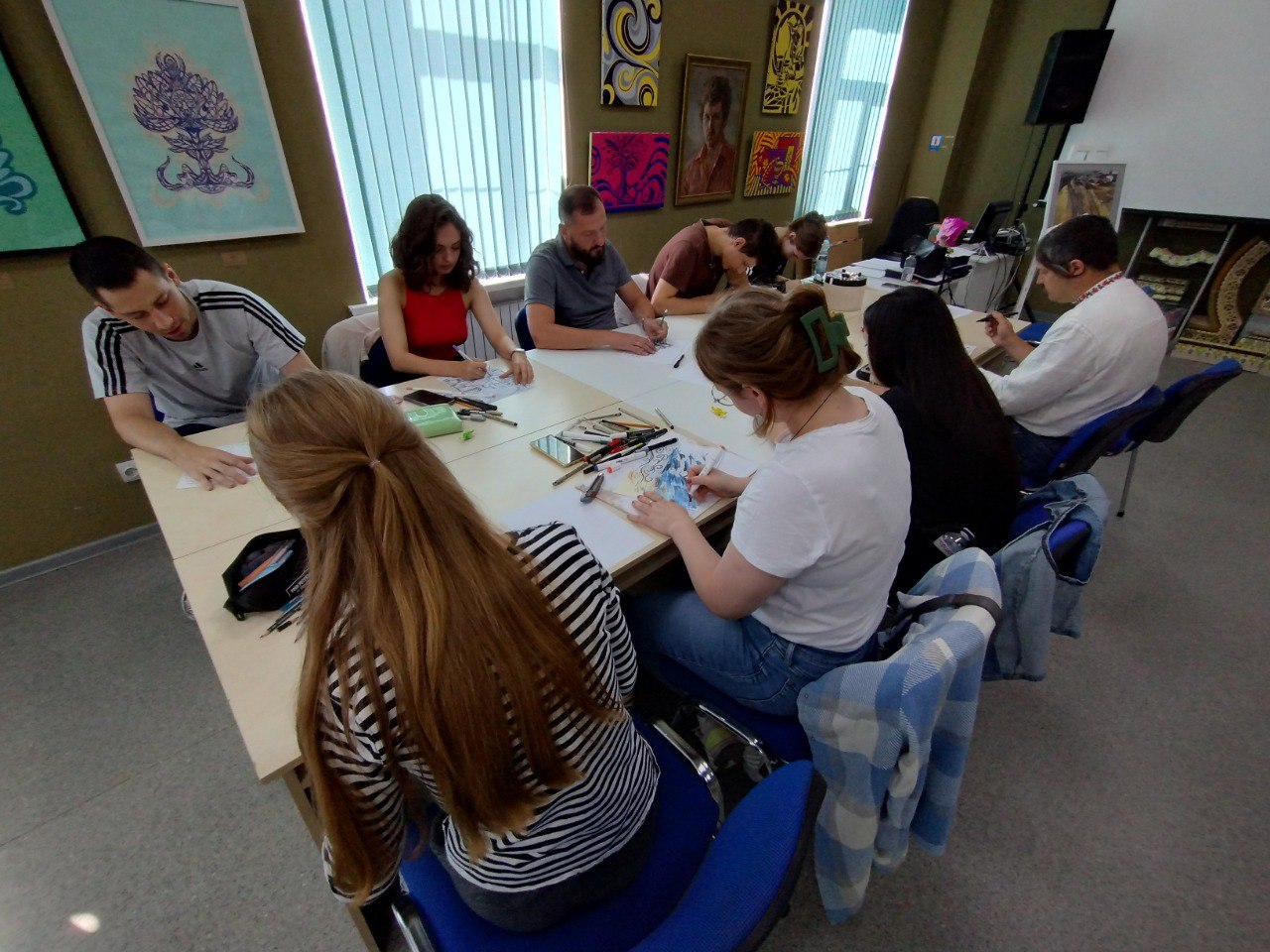
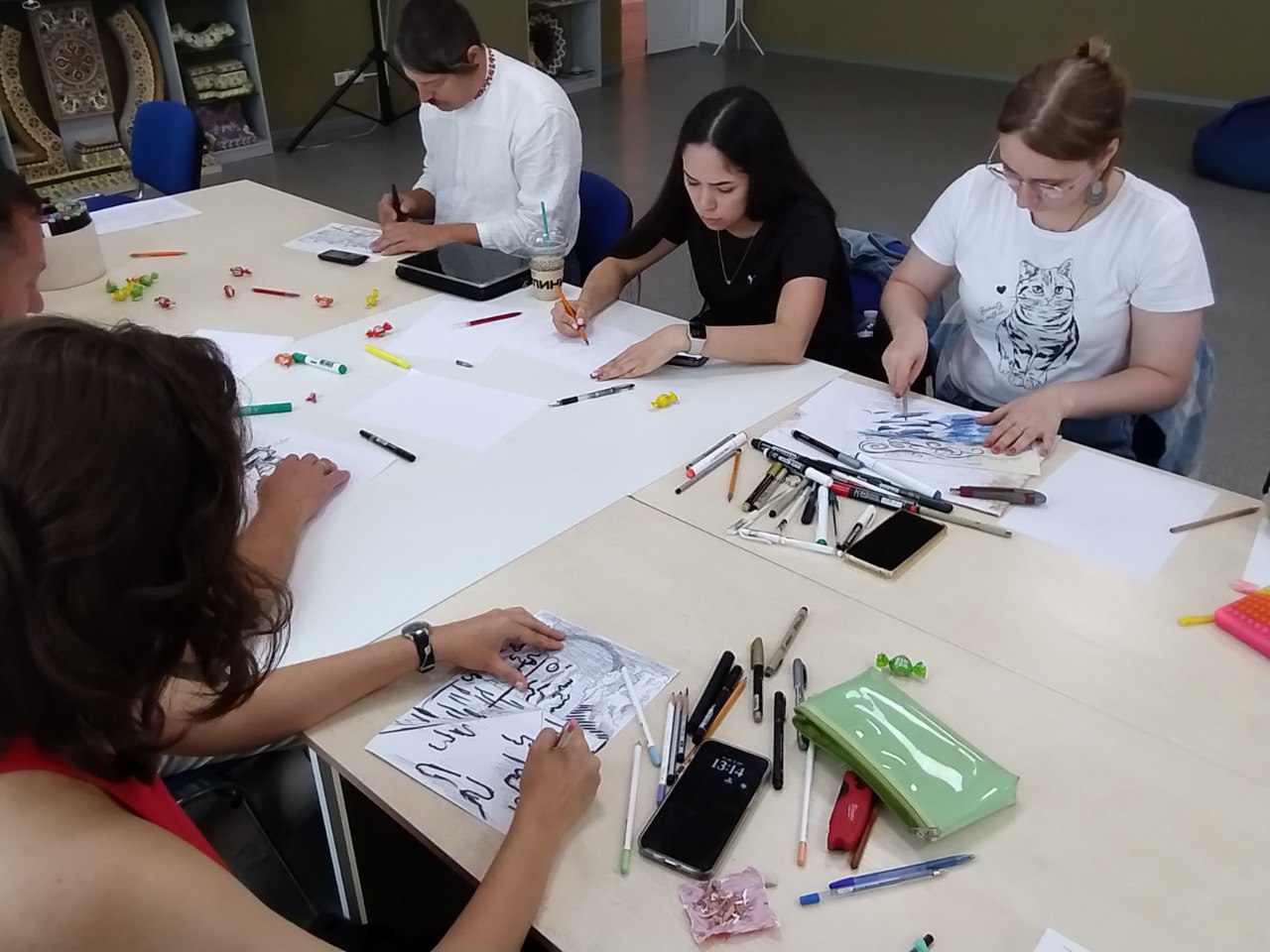
The “Landscape Transformation” art therapeutic session facilitated the symbolic release of fears. Visualising a dangerous landscape allowed traumatic emotions to be “brought out” from the inner world, where they became an object that could be observed, analysed, and controlled. This helped to distance oneself from fear, make it visible and, consequently, less threatening, reducing its intensity. An important aspect was the restoration of a sense of control. The transition from passive reflection of fear to active landscape transformation restored a sense of agency and self-efficacy. Participants realised that they are not helpless victims of circumstances, but can actively create a safe environment for themselves, influencing their inner state.
Furthermore, this art therapeutic method contributed to the search and activation of resources. The process of adding elements of protection and safety prompted a deep introspective search for internal and external resources. This could be the realisation of one's own resilience, unwavering self-belief, the support of family and loved ones, or hope for a peaceful and bright future. This process helped integrate traumatic experiences into the overall life narrative, showing that after the darkest period, dawn can always come. This approach prevents “getting stuck” in the past, allowing one to move forward. Ultimately, such a practice fosters the development of optimism and hope, as the completed, transformed landscape serves as a powerful visual reminder that positive change is possible. Human inner strength is capable of transforming chaos into order and paralysing fear into calm and confidence.
The event was held as part of the international, large-scale EU-funded Erasmus+ KA220-ADU project “TRUST” – Trauma of refugees in Europe: An approach through art therapy as a solidarity program for Ukraine war victims (Grant No. 2024-BE01-KA220-ADU-000257527).
The project title is decoded as follows:
TRUST
T – Trauma
R – Refugees
U – Ukraine
S – Solidarity
T – Therapy
The project is co-funded by the EU and led by the Centre Neuro Psychiatrique St-Martin from Belgium, in partnership with the National University “Yuri Kondratyuk Poltava Polytechnic” (Ukraine), Greek Carers Network EPIONI (Greece), Fondazione Don Luigi Di Liegro (Italy), Lekama Foundation (Luxembourg), EuroPlural Project (Portugal).
We express our sincere gratitude to our partners for their invaluable support, which makes it possible to implement such vitally important initiatives that bring the light of hope and healing to those who need it most.
It is worth noting that Poltava Polytechnic lecturers are eligible to participate in academic mobility and internship programs. Students can study abroad through Erasmus+ credit academic mobility grant programs for a semester or a full academic year at leading universities in Austria, Denmark, Estonia, Finland, Germany, Greenland, Latvia, Lithuania, the Netherlands, Norway, Poland, Portugal, Romania, Slovakia, Spain, and the Czech Republic.
For more detailed information regarding current internship, teaching, and academic mobility programs abroad, please get in touch with the International Relations Department (office 213-C, interoffice@nupp.edu.ua) or the International Relations Coordinator of the National University “Yuri Kondratyuk Poltava Polytechnic” – Ph.D. in Philology, Associate Professor of the Department of Germanic Philology and Translation, Anna Pavelieva (email: kunsite.zi@gmail.com, phone: +38-(095)-91-08-192).
Media Centre of
National University “Yuri Kondratyuk Poltava Polytechnic”



